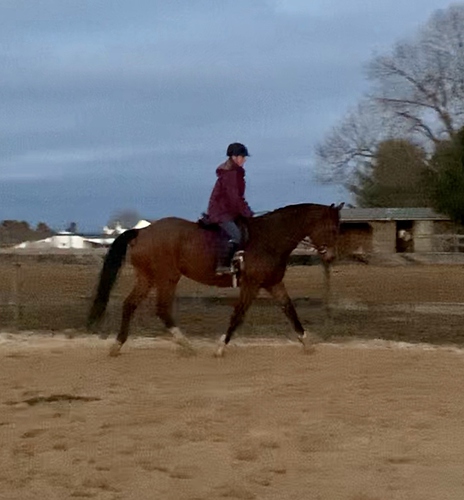Hi ! I’m very fortunate to have a teenaged lesson student who wants to spend every minute at the farm. This is my private farm and I have a lesson program geared towards beginner riders and students with emotional disabilities. She’s way past most of my normal students and while I’ve now gotten her a few gigs at more advanced programs she still considers this her home.
Most of the lesson horses get used enough that they don’t need her riding them extra, but I have a few of my show horses I let her work if I’m there watching. If I’m not watching (I’m a full time public school teacher) she’s allowed to groom and lunge if she checks in with me via text.
She is very methodical and likes structure so I wanted to give her a really detailed plan for lunging and in hand work. How many times in each direction, what gait, how many transitions, how long over caviletties etc. I wanted some suggestions to make sure my idea were in line with people more experienced with legging up horses.
Her 4 “clients” are as follows
20 year old 17.2 Selle Francias ex advanced level eventer- he just needs to move and keep a top line he is not in hard work
15 year old 2nd level dressage horse OTTB - he’s fit and showing rated again as soon as the shows start up here.
7 year old OTTB - came off the track a year ago, has been in light work but mostly hacking and experiences.
6 year old 17.3 Oldenburg - has some soundness issues and needs to stay in work so his muscles can support his joints (fused hind pasturn and shoulder ocd)
I know these horses so well so I feel like I can sort of wing it based on the day or what I’m seeing, she can identify if they aren’t sound and knows to not continue but she’s more comfortable with a concrete plan. As a teacher I started making a literal lesson plan and then stopped myself and decided to post here before I maximize the entire thing and scare her 

